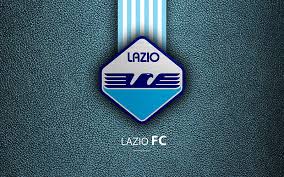
Lazio Club
The Lazio Club is one of the most storied football clubs in Italy, with a rich history filled with achievements, rivalries, and passionate fan culture. Founded in 1900, the club has not only been a powerhouse in Serie A but also a significant player on the European stage. This blog post aims to give a comprehensive overview of the Lazio Club, detailing its history, achievements, key players, rivalries, facilities, coaching staff, recent performances, and future prospects pg88.
Overview of Lazio Club
The Lazio Club, officially known as Società Sportiva Lazio, stands as a beacon of Italian football. With a strong presence in Rome, Lazio has garnered a devoted fanbase and operates under the core principles of tradition and excellence. The club’s emblem features an eagle, symbolizing strength, ambition, and freedom, traits that resonate deeply among its supporters.
Established over a century ago, Lazio has become synonymous with determination and competitive spirit. The club’s colors—sky blue and white—have adorned the jerseys of countless legendary players, and the iconic Stadio Olimpico serves as the battleground for many fierce contests. The ethos of the Lazio Club revolves around hard work, community engagement, and respect for the game’s traditions, making it an essential part of the fabric of Italian football.
The journey of Lazio has had its share of ups and downs, from periods of glory to times of struggle. Yet, through it all, the spirit of the club has remained unwavering, driven by the loyalty of its fans and the ambitions of its management. In this overview, we will dive deeper into the various facets that make up the Lazio Club, exploring how it has shaped its identity in the world of football.
Origins of the Club
The foundations of the Lazio Club were laid when a group of athletes gathered at the Piazza della Libertà in Rome on January 9, 1900. They aimed to create a sports club that would promote not just football but a range of athletic activities. The inaugural meeting marked the birth of Società Sportiva Lazio, with its first president, Luigi Bigiarelli, leading the charge.
Initially focused on athletics, the club soon turned its attention to football. By joining the Italian Football Federation in 1904, Lazio began competing in domestic leagues, quickly emerging as a formidable force. Over the years, the integration of football into the club’s identity became paramount, reflecting the passion and resilience of Roman culture.
Evolution Through the Years
As the 20th century progressed, so did the Lazio Club. The team underwent several transformations, both in terms of management and playing style. The introduction of professional football in the 1920s marked a turning point, as Lazio sought to solidify its place within the Italian football hierarchy. The club’s first major triumph came with its victory in the Coppa Italia in 1937, laying the groundwork for future successes.
The post-war period was characterized by fluctuations in performance, but the arrival of key players during the 1960s and 1970s elevated Lazio to new heights. The club captured its first Scudetto title in 1974, signifying a triumphant moment in its illustrious history.

